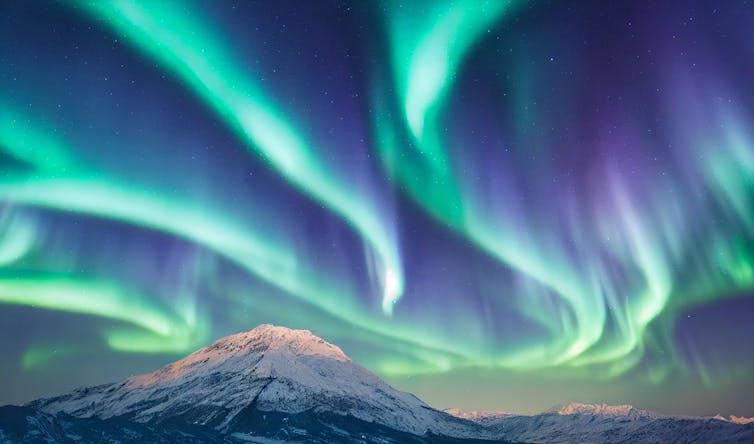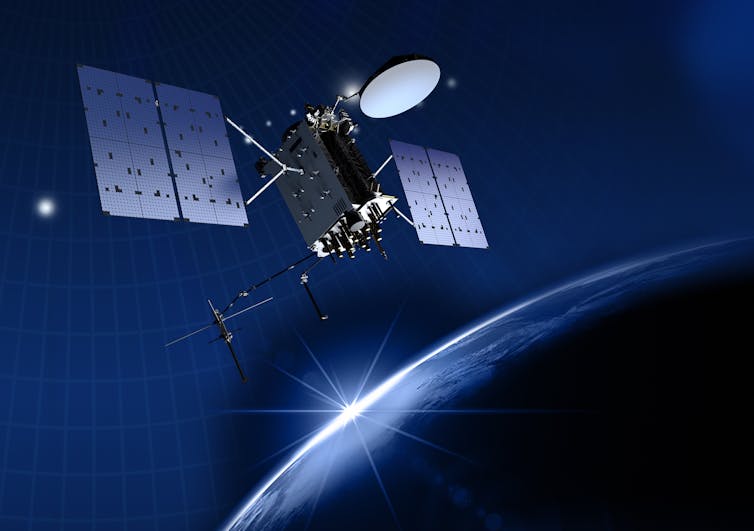

What would higher solar activity mean for us?



Our Sun is a steady and everlasting companion. Reliable like a clock, its apparent passage across the sky allows us to measure time. The Sun and its path is also the source of Earth’s seasons. But in many respects, our Sun is far from calm and unchanging.
Close up, the Sun shows extensive variation and activity. Bright explosions called flares regularly cause huge outbreaks of radiation. Darker, cooler areas called sunspots emerge, move, change shape and vanish. The Sun also releases material into space in powerful eruptions, called solar particle events.
This solar activity varies with time. It peaks every 11 years — and the next high point had been forecast for July 2025. But it now looks as if this “solar maximum” will arrive earlier than expected. This finding could lead to a better understanding of our host star.
Solar activity also affects Earth and the technology we rely on. Solar particle events can disable satellites and disrupt electrical grids. Activity from the Sun that affects our planet is often referred to as “space weather”.
To ensure we can make forecasts and prepare, we need a good set of rules — a scientific model. Nasa and the US National Oceanic and Atmospheric Administration have been creating these for many years.
They merge a variety of methods to predict solar activity. This approach has yielded a date for the next solar maximum (the peak) of around July 2025. This peak was also forecast to be relatively weak, like the maximum during the previous solar cycle. This lasted from about December 2008 to December 2019, with a peak in April 2014.
However, an alternative forecast has been published by a team led by Nasa scientist Robert Leamon and Scott McIntosh, deputy director at the US National Centre for Atmospheric Research (NCAR). They say the cycle’s peak will occur a year earlier in mid-late 2024 and sunspot numbers will be twice the official prediction — an indication of activity. Observations of the Sun currently support this alternative forecast.
What’s interesting is that many prediction methods rely on timing the length of a cycle measured by the minimum (lowest point) of solar activity. But Leamon and McIntosh looked in more depth at the actual sunspots and their magnetic properties. When a solar cycle ends, it is not instantaneous. It is a gentle transition where fewer sunspots appear with magnetic properties linked to the old cycle and more appear with properties linked to the new cycle.
This current prediction uses the terminator — the time when the very last sunspot of the old cycle has faded — to indicate the end of that solar cycle. This can result in different timings for the length of a cycle. For example, the last minimum was December 2019 but the terminator actually happened in December 2021. The research group was then able to develop predictions for how strong the upcoming cycle would be by looking at how long the previous one was.
But what would higher solar activity mean for us, as the cycle shortly reaches its peak? As the Sun releases vast amounts of energy as flares and other events that eject material into space, there is a chance that some will hit Earth if we are in the line of fire. Luckily, Earth has its own magnetic shield that can protect us.
As particles and magnetic fields from the Sun reach us, they first interact with Earth’s own magnetic field, causing it to be buffeted and squashed. It also forces solar particles to move in a way dictated by Earth’s magnetic fields. This traps them to some extent, preventing them from hitting the Earth’s surface.

Although Earth’s magnetic “shield” gives us a degree of protection, solar activity still affects us. Examples of this are the northern (or southern) lights. These occur when solar particles reach the high atmosphere and “excite” atoms there, causing them to move to a high energy state. As the atoms relax, they emit light in different colours — for example as reds, greens and blues. This stunning display is ideally viewed closer to our planet’s magnetic poles.
Solar activity can cause power surges in the long transmission lines used in electrical grids. One example was the 1989 power blackout in Quebec, Canada.
Other effects include a change of particle density in the high atmosphere. This can result in minor errors on devices using GPS. It can also lead to slight heating of our outer atmosphere, making it extend further into space. This increases the thickness of the atmosphere for satellites in low Earth orbit.
This can cause them to lose altitude and, sometimes, burn up. One such event affected a batch of new StarLink satellites launched by SpaceX in February 2022. This event occurred when the Sun was showing roughly half the activity we’re currently experiencing.
When solar activity grows stronger, it’s more likely that a solar storm could strike us, causing electrical problems on satellites. Those spacecraft may need to be put into what’s called “safe mode” where many systems are switched off. This allows them to sit out the storm.

Our society is constantly developing in ways that make us more reliant on electrical infrastructure. We are also expanding our technology into space — technology which is vulnerable if we don’t monitor space weather and its source, the Sun. If we know what’s coming, we can prepare. Electrical grids are being designed to be less prone to power surges and satellites are being designed to better ride out space weather.
But we need a deeper understanding of our star. Experts already keep a detailed log of past observations and are constantly extending their ways of observing the Sun and space weather using satellites. We are also improving scientific models that let us predict solar activity. This current, surprising solar cycle will enhance our ability to do that.![]()
Daniel Brown, Lecturer in Astronomy, Nottingham Trent University
This article is republished from The Conversation under a Creative Commons license. Read the original article.
We are a voice to you; you have been a support to us. Together we build journalism that is independent, credible and fearless. You can further help us by making a donation. This will mean a lot for our ability to bring you news, perspectives and analysis from the ground so that we can make change together.

Comments are moderated and will be published only after the site moderator’s approval. Please use a genuine email ID and provide your name. Selected comments may also be used in the ‘Letters’ section of the Down To Earth print edition.